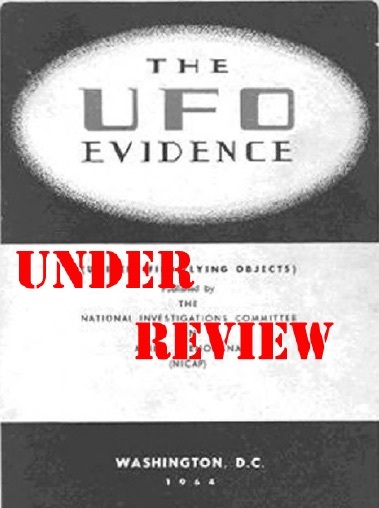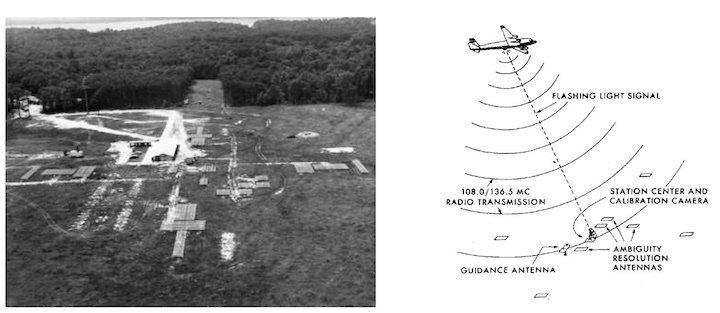5.05.2023

April 11, 1958 Johannesburg, South Africa
April 11, 1958--Johannesburg, S. Africa. Airport instrument inspector, others watched red- dish-white UFO arc back and forth. [X]1
In section X there is the following description:
At Johannesburg, April 11, 1958, H. F. Daniels (airport instrument inspector) and others watched a reddish-white UFO above the north horizon at night, moving back and forth east and west. “I have worked with aircraft for 18 years,” Mr. Daniels said, “and the thing I saw was certainly no conventional plane. The speed was phenomenal and it sometimes became completely station- ary, changing color from white to blood red.” [55.]2
Footnote 55 comes from the Johannesburg Sunday Times of April 13, 1958.3
Source check
Getting a copy of that specific newspaper clipping was not easy to come by. I could not locate a copy. Loren Gross’ UFO history for March-April 1958 has no clipping or mention
of this sighting either. The May-June 1958 issue of Flying Saucer Review appears to have content from that article cited by NICAP. They mention the witness Daniels and his observations:
Three nights running a star-like object was watched over the northern sky over Johannesburg and several reef towns. The object was seen on Wednesday, April 9, Thursday, April 10, and Friday, April 11. In almost every case descriptions by eye-witnesses were identical. An official at Jan Smuts Airport, Mr. H. F. Daniels, said that it covered a steady 30 degree arc every 10 seconds. “This gave it a speed of at least 2,000 m.p.h. I have worked with aircraft for 18 years and the thing I saw was certainly no conventional plane. Its speed was phenomenal and it sometimes became completely stationary changing color from white to blood red.” Among others who watched the object were two Johannesburg journalists and a South African Air Force meteorology official.4
A check of Blue Book files reveals there is a mention of this case as “For information only”. That case has only one page. It is a page from Menzel and Boyd’s book, The world of flying saucers. It mentions the event and provides additional information unknown to or ignored by NICAP:
A flying saucer reported from Johannesburg, South Africa, on April 11, 1958, belongs in this category. Hundreds of witnesses reported a mysterious starlike object maneuvering in the northern sky on three successive nights at speeds in excess of 2000 miles an hour. Most ob- servers agreed that “The Thing” could not have been any known aircraft because its speed was too great; it sometimes hovered stationary in the air, and repeatedly changed color from white to red to deep scarlet. One member of an Interplanetary Club who watched it through binoculars described the UFO as saucer-shaped with a rim like a soup plate around the edge.
Members of the Council for Scientific and Industrial Research Minitrack Station, near Johannesburg, were amused by the variety of re- ports on “The Thing”. The mysterious object in the night skies was in fact a South African Air Force Dakota aircraft, flying back and forth so that the Minitrack Station could test the calibration of its tracking instruments. In addition to the usual navigation lights, the aircraft had carried a bright, flashing light so that it could be photographed [7a].5
Footnote 7a indicates the source was the Johannesburg Star of April 14, 1958.6 Obtaining a clipping of this story was not possible to obtain either. I could find no further mention of the case in any sources that I have and a search of the Internet simply mirrors the entry from the UFO evidence.

Analysis
This case suffers from a lack of being able to examine primary sources and additional information regarding the sighting. NICAP’s clipping describes what one witness reported to the news media. The clipping mentioned by Menzel and Boyd appears to tell “the rest of the story”.
The Minitrack Station mentioned by Menzel and Boyd was located at Esselen Park and became operational in January of 1958.7 Esselen Park was located on the Northeastern suburbs of Johannesburg and only about 7 miles north of the airport. The station did not last long at this site due to nearby electromagnetic interference. In 1960, they moved to Hartebeesthoek, which was about 30 miles to the NNW of Esselen Park.
The one observation mentioned is from Mr. Daniels, who claimed to have seen the object cover 30 degrees of arc in 10 seconds. He computed this to be a speed of 2000 mph. There is no way to verify his measurements or how he determined the speed if he did not know the distance to the object. Assuming the aircraft was flying over the minitrack station at an altitude of about 20,000 feet, the distance to the aircraft would have been about 8 miles. If his observations were 100% accurate, that means the speed would have been about 1440 mph. However, there is going to be a margin of error in his measurements. If he were off by a factor of three, that would have been 10 degrees of arc in 30 seconds. Those values would result in a speed of about 166 mph. The plane also could have been closer to the observer at the time of his observations (The northern end of the airport is only 5 miles from Esselen Park). One must remember, the witness was observing a flashing strobe, which would jump from one point in the sky to another implying rapid motion. Being able to accurately measure angular distance under such conditions would be difficult. Since a C-47 “Dakota” could fly at around 200-220 mph, the margin of potential error in his observations cannot rule out a C-47 aircraft as the source.
The Minitrack station was designed to detect satellites in orbit. This was the beginning of the space age and South Africa was ideally placed to monitor any satellites launched from Cape Canaveral. The station had a series of antennas and an optical tracker designed to track a satellite and determine its position in the sky to an accuracy of one arc-minute or less. The calibration of the station in- volved using a high flying aircraft with a flashing strobe just as described by Menzel and Boyd.8 The plane would fly over the anten- na complex and transmit the frequency used to track satellites. The optical system for the Minitrack Station would photograph the plane as it flew over the site and use the background stars to determine the track of the aircraft. The antenna system would then be calibrated to match the visual track. Essentially, the aircraft acted like a satellite and the system was calibrated to its flight path.
Calibrating the minitrack station was done every 3-4 months9 and probably was initially calibrated before and after launches to verify proper operation. Project Vanguard attempted a launch on April 29, which failed. It seems likely a calibration run would have been run in mid-April prior to the planned launch.
Conclusion
Like a good portion of the cases listed in the UFO evidence document, this entry is based on little more than a newspaper clipping which documented some potentially erroneous observations. I suspect it was mailed to NICAP and they chose not to pursue the matter any further after collecting their report. The explanation documented by Menzel and Boyd appears to check out. They did use high flying aircraft with a flashing light to calibrate the minitrack station and such a station did exist north of Johannesburg airport, where the primary witness was looking towards. It appears that personnel at the minitrack station were conducting a cali- bration during the period the sightings happened. However, because we cannot positively identify that the plane was in that loca- tion at the precise moment the witness reported it, we can only label this as “probable aircraft’. That being said, there is no reason to reject this explanation and the case should be removed from the “UFO evidence” category.
Quelle: SUNlite 2/2023
